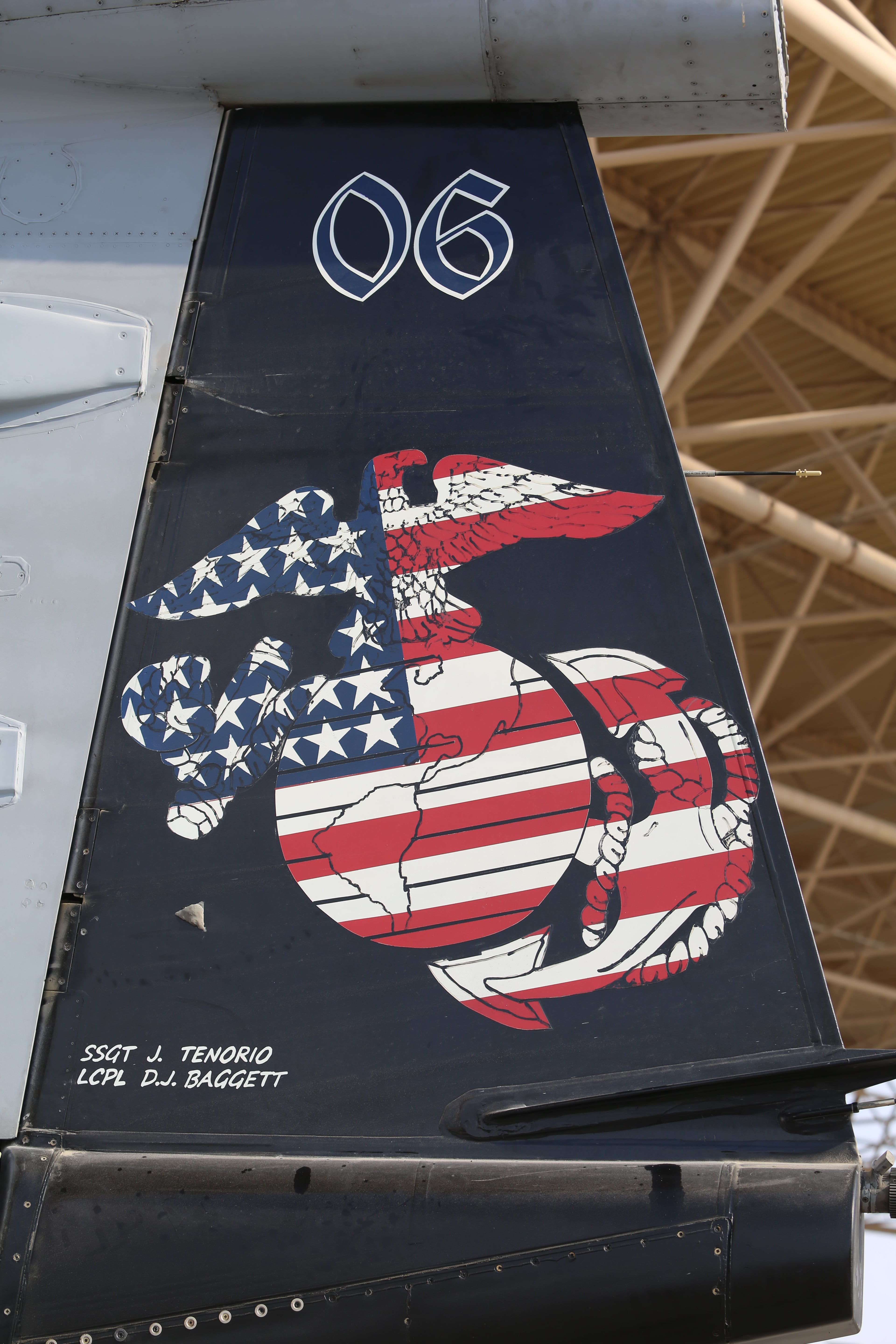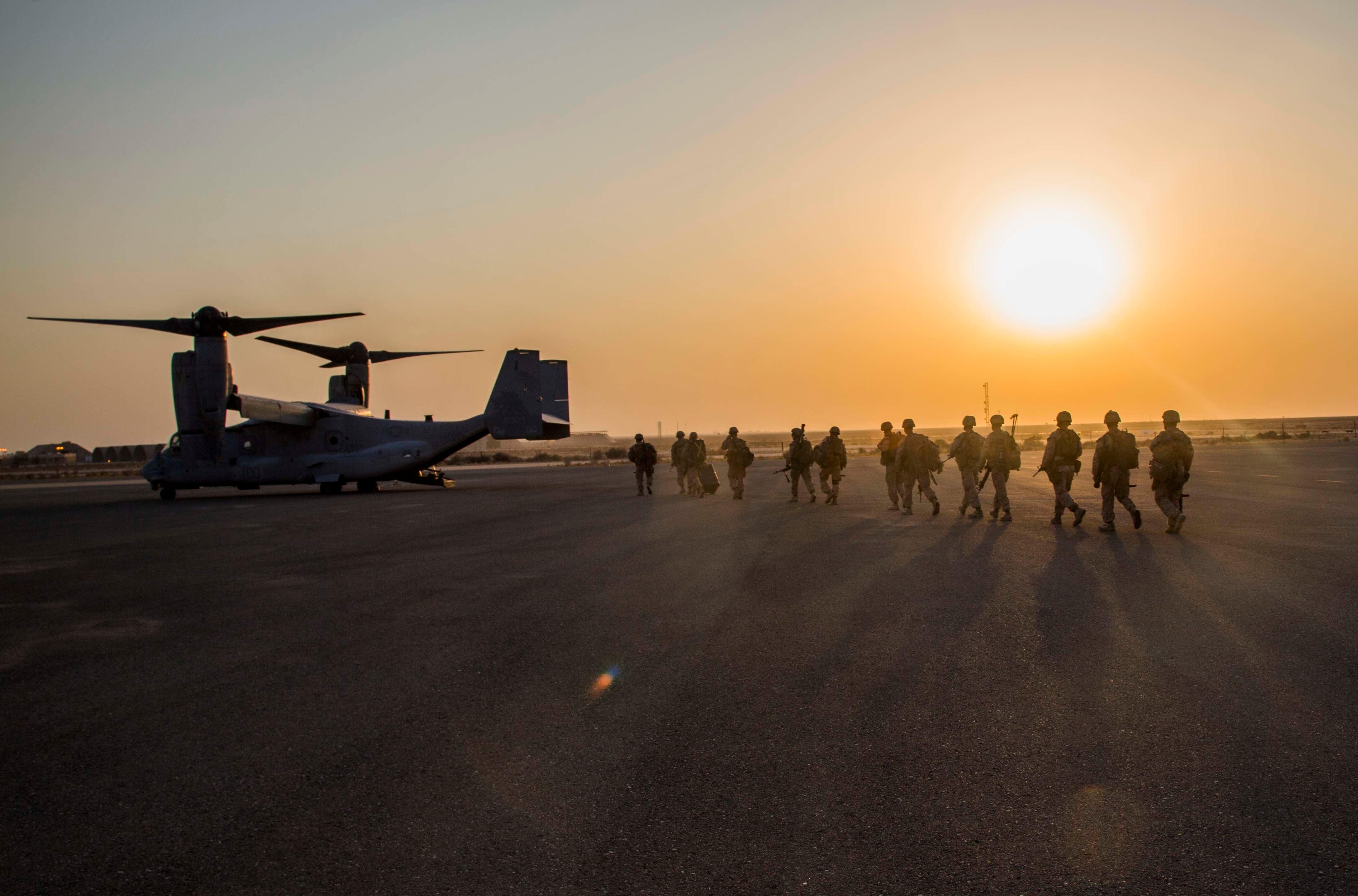The Marines' new crisis response unit in the Middle East had been planned for months before it was activated on Oct. 1. But few predicted how quickly the unit would be called to respond in the fight against the Islamic State group in Iraq and Syria.
Col. Jason Bohm, commander of Special Purpose Marine Air-Ground Task Force Crisis Response-Central Command, CENTCOM commander Col. Jason Bohm told Marine Corps Times this month that the 1,900-strong unit began to receive tasking as soon as it arrived in the Middle East over the month of September.
Three months later, he said the unit is operating in six countries within CENTCOM U.S. Central Command, though he declined to couldn't name them due to security concerns and out of deference to foreign partners in the region.
Defense Department officials have so far identified few of the U.S. military units supplying the roughly 1,800 troops deployed to Iraq to train and equip the nation's troops in the fight against the Islamic State, but Bohm confirmed that an undisclosed number of Marines from the task force were on the ground in Iraq to aid the effort. The Marines task force, he said, had used existing infrastructure to create a partnership capacity site in the country designed to increase the capabilities of the Iraqi security forces, he said.
"We do interoperability training with them. We sit down with Iraqi leadership," Bohm said. "We ask them where they think their unit is; we conduct an assessment with them."
The Marines had also tailored training packages, he said, to meet Iraqi units' specific perceived needs, including one package designed to improve combined interoperability in urban environments. The success of the Marines' efforts, he said, can be seen in the effectiveness of the Iraqi security forces they trained.

An EA-6B Prowler with Special Purpose Marine Air-Ground Task Force-Crisis Response-Central Command, parks under a maintenance shelter before conducting missions in the U.S. Central Command area of operations. The Marines and sailors of SPMAGTF-CR-CC serve as an expeditionary, crisis-response force tasked with supporting operations, contingencies and security cooperation in the Middle East.
Photo Credit: 1st Lt. Matthew Finnerty/Marine Corps
The Marine contingent conducting training in Iraq is in addition to the at least 150 Marines on the ground in Baghdad providing embassy security in response to September request from the State Department. Troops with the 22nd Marine Expeditionary Unit initially responded to the call, but were replaced by Marines from the task force when the MEU began its return to the U.S. unit departed in October. The overall number of troops in Iraq is expected to reach 3,000 over the next few weeks.
In keeping with its crisis response mission, Bohm said the unit adheres to steady-state response timelines: notification plus six hours, meaning troops can respond to a situation within six hours of being alerted to it. But the current high operational tempo — including and the steady stream of air surveillance and strike missions — means that timeline is often significantly narrower.
"Because of the dynamic air campaign, we have habitually had our forces on an 'N-plus-30-minute' tether," he said.
And oOn several occasions since the task force arrived in theater, he said, the unit has carved its response time down to nothing by keeping aircraft in the sky in a holding pattern, ready to respond if needed.
Bohm did not specify which events had prompted these instances of airborne ready posture, but the unit has emphasized training in TRAP — tactical recovery of aircraft and personnel. The unit trained for this specific mission sets much as all Marine expeditionary units do prior to deployment, and was quickly tasked by theater commanders with the capability when it activated.

Marines with Special Purpose Marine Air-Ground Task Force-Crisis Response-Central Command, prepare to board MV-22B Ospreys during a Tactical Recovery of Aircraft and Personnel rehearsal drill in the Middle East.
Photo Credit: Lance Cpl. Skyler Treverrow/Marine Corps
"We told them, 'we do windows.' We will do what the nation needs us to do," Bohm said.
A Marine MV-22B Osprey crew attached to the 26th MEU received honors for a successful TRAP mission in 2011, when it rescued a downed F-15 pilot near Benghazi, Libya in a tight 90 minutes.
Bohm said his unit had pre-staged forces for TRAP missions in different locations around their area of operations to stay at the ready.
In addition, Bohm said, the task force is flying both kinetic and non-kinetic missions daily in support of Operation Inherent Resolve, the U.S.-led intervention against IS. This includes AV-8B Harrier strike missions on IS targets, and EA-6B Prowlers flying electronic warfare missions, conducting non-traditional intelligence, surveillance and reconnaissance, and working to identify viable targets.
On top of all these tasks, Bohm said the unit is still conducting professional military education and recently graduated two new corporals courses. The unit is also pursuing partnership and bilateral training opportunities in theater. Bohm could not name all the countries involved in these training efforts, but the unit recently participated in Exercise Red Reef with Navy, Marine and Royal Saudi Nnavy forces.
While Bohm said the unit has not been overtasked so far, his feedback from this first deployment may be used to augment the size or equipment of SPMAGTF-CR-CC in future rotations. He recently provided feedback to Marine Corps headquarters that will be used in planning for force "right-sizing." And the unit leaders will do a final assessment before they redeploy this spring to capture additional perspectives and lessons learned.
"We call ourselves the plank owners of this organization," Bohm said. "We take great pride that we're the first Marine Corps units associated with Operation Inherent Resolve. We use that for morale purposes, to keep [the Marines] focused."




